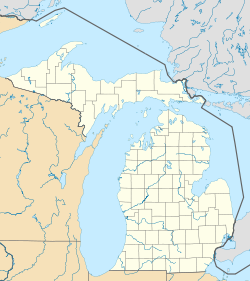History
The same year that Dow founded the Dow Chemical Company, he purchased land for his family's home. He engaged Clark and Munger, Bay City architects, to develop a design and plans. Construction began after the snow melted in 1899 and was completed before Thanksgiving that year. Known by the family as The Pines, it was the home of Herbert and Grace Dow and their seven children for over fifty years. Although the family could afford it, they never purchased another house; the Pines was the family's sanctuary. [5] H.H. Dow died in 1930 but his wife Grace remained in the house until her death in 1953. She bequeathed her house, gardens and Dow stock to the Herbert H. and Grace A. Dow Foundation which she established following her husband's death. [5] Upon the death of Grace Dow, the house was closed and left unchanged for two decades. [3] The home contains many items utilized by Dow family members; trained docents share stories to make these artifacts come to life. Visitors can see the books read by the children of Herbert and Grace and clothing worn by Mrs. Dow. [4]
Description
The house is an architecturally vernacular 2½-story wood-frame structure, with a diversity of projections, roof styles, and window sizes and shapes. It is not considered to be architecturally significant, but rather architecturally eclectic. The most prominent feature is its' irregular shape with extensions and bays, groups of windows and almost no ornamentation on the exterior. The design has a typical center hall and quarters for servants in the back of the house. There is a two-story study and recreation room with an entrance attached diagonally at a corner. [3]
Dow was also interested in horticulture, developing extensive orchards and gardens near his home. That land is now the Dow Gardens, a private park open to the public. [3] The Herbert H. Dow House is also within Dow Gardens.
This page is based on this
Wikipedia article Text is available under the
CC BY-SA 4.0 license; additional terms may apply.
Images, videos and audio are available under their respective licenses.



